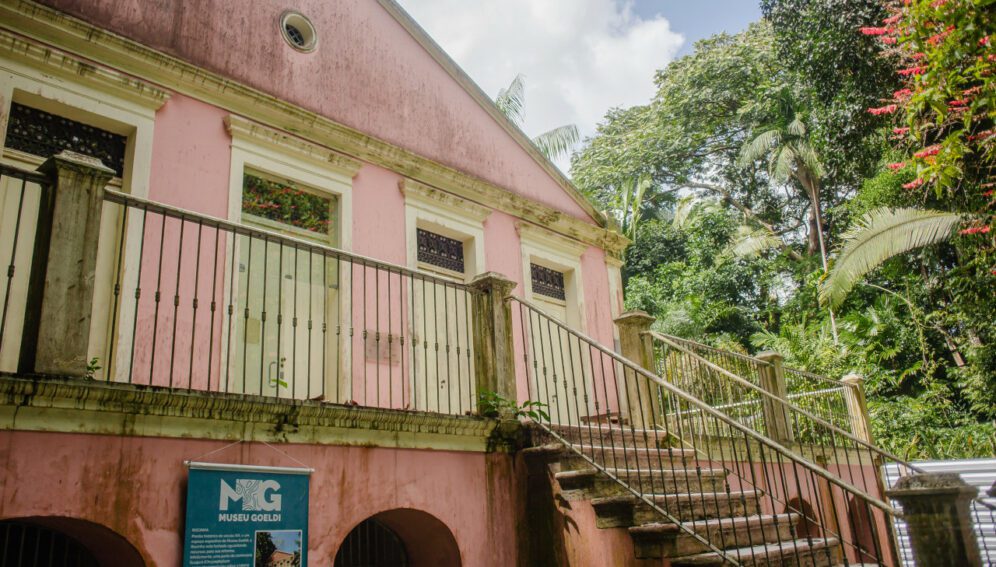18/03/24
Lack of resources threatens research in the Amazon

Send to a friend
The details you provide on this page will not be used to send unsolicited email, and will not be sold to a 3rd party. See privacy policy.
[SÃO PAULO] Teaching and research institutions in the Amazon say they are struggling to maintain their output due to dwindling financial resources, despite Brazil’s climate promises on the global stage.
At COP28 in Dubai last December, president Luiz Inácio Lula da Silva reiterated Brazil’s commitment to end deforestation by 2030, while the Amazonian city of Belém, in the north of the country, is set to host next year’s UN climate conference, COP30.
Meanwhile, national teaching and research institutions located in the largest tropical forest in the world face difficulties in maintaining their activities, with low budgets that have been stagnant for years, without adjustments for inflation, scientists tell SciDev.Net.
The Paraense Emílio Goeldi Museum in Belém — the oldest research institution in the Amazon region— reduced its budget by more than 10 per cent in the last two years.
“Without money, we risk a biome data blackout.”
Nilson Gabas Júnior, director of the Paraense Emílio Goeldi Museum
“We had approximately US$3.6 million in 2023 to pay fixed expenses, which was no longer enough because it had not been adjusted to the 5.8 per cent inflation of the previous year,” said Nilson Gabas Junior, director of the museum.
In 2024 this allocation fell further to US$3.2 million, while inflation in 2023 was 4.6 per cent, he added.
“We don’t know if we will be able to cover all our expenses until the end of the year,” Gabas told SciDev.Net, adding that the museum needs US$6 million per year to finance its activities adequately.
The situation is also critical at the National Institute of Amazonian Research (INPA), one of the top three research institutes on the Amazon biome. Its budget for the payment of fixed expenses decreased from almost US$7.6 million in 2022 to US$7.3 million in 2023, a figure lower than that of 2017.
The budget of the Federal University of Pará (UFPA), in Belém, was reduced to US$37.4 million in 2024—just over US$1 million less than in 2023. And the budget of the Federal University of Amazonas, in Manaus, presented a gap of more than US$26.7 million in 2023 compared to 2019 without taking into account inflation.
In addition to budget shortfalls, the unequal distribution of resources for research is also problem, say academics.
Emmanuel Zagury Tourinho, rector of the UFPA, told SciDev.Net: “The latest data we have shows that Amazon institutions continue to be penalised by an unequal distribution of resources, something incompatible with the government’s ambitions to consolidate the region at the centre of the global climate agenda.”
This disparity was reflected in a study published in the journal Perspectives in Ecology and Conservation.
The authors analysed the distribution of resources by Brazil’s National Council for Scientific and Technological Development—a research funding agency linked to the country’s Ministry of Science, Technology and Innovation—for projects in areas related to biodiversity, such as botany, zoology and ecology.
According to study author Lis Stegmann, science and technology activities in Brazil are highly concentrated in a few institutions in the south and southeast, outside the area covered by the Amazon rainforest.
“They concentrate the best-evaluated postgraduate programmes, they have more infrastructure, they produce more and they monopolise the best job opportunities, which is why they attract the best students and researchers, and also more resources for research,” she said.
As an example, only 329 of the 2,744 researchers in biodiversity graduate programmes are assigned to institutions in the Amazon, such as the Goeldi museum and INPA, “which are chronically underfunded and have insufficient staff”, says Stegmann.
This difference is even greater when you look at the distribution of researchers in postgraduate programmes in all areas: 23,422 researchers are in institutions in the north, with 188,954 in the southeast, according to data from the Ministry of Education.
“The threats to Amazonian ecosystems make it crucial to create a better understanding of the conservation of its biodiversity,” added Stegmann. “For that, investments in research need to be regular and predictable.”
SciDev.Net approached Brazil’s National Council for Scientific and Technological Development for comment about the distribution of researchers in the country, but no answer had been received by the time of publication.
This article was produced by the Latin America and Caribbean edition of SciDev.Net














